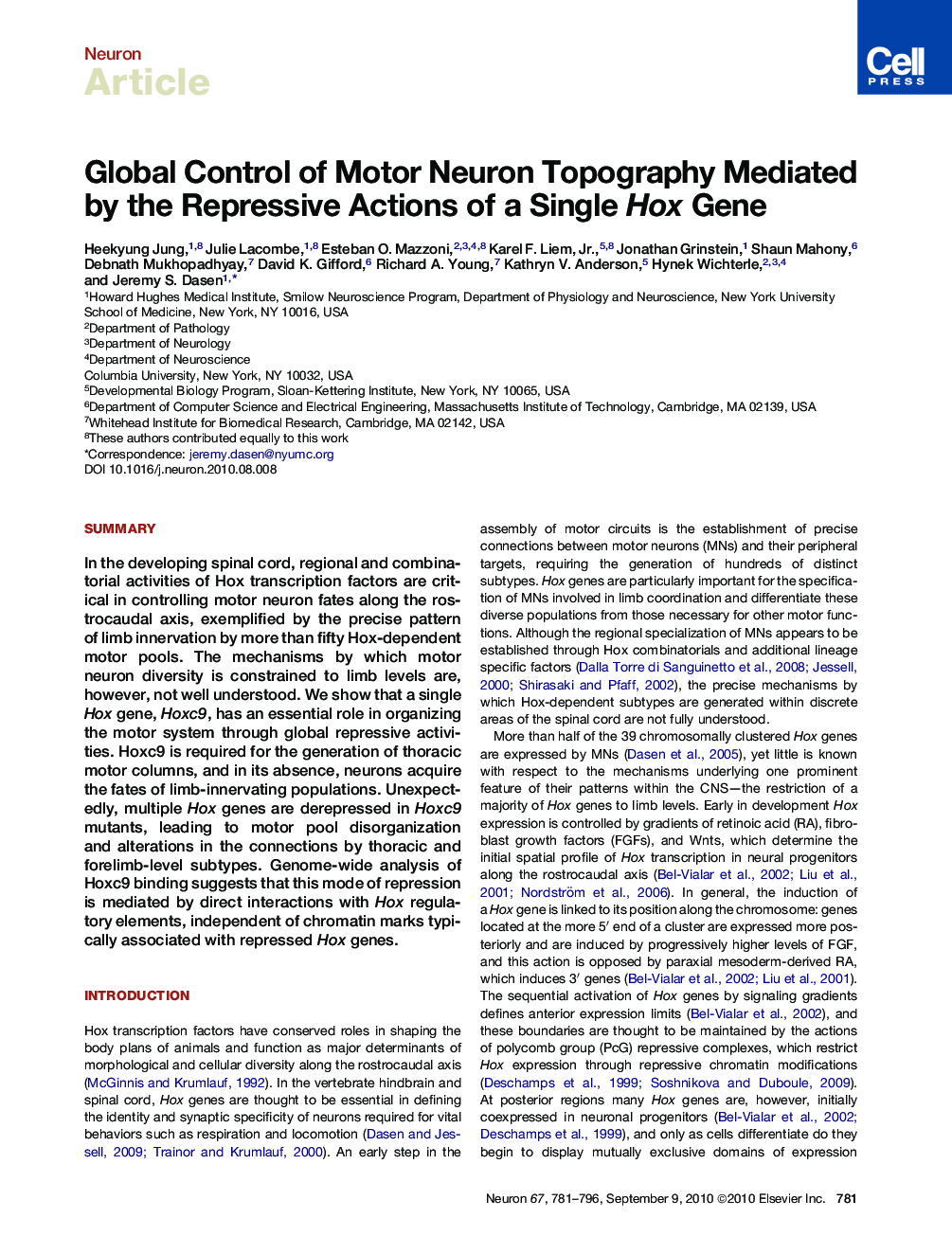| Article ID | Journal | Published Year | Pages | File Type |
|---|---|---|---|---|
| 4321918 | Neuron | 2010 | 16 Pages |
SummaryIn the developing spinal cord, regional and combinatorial activities of Hox transcription factors are critical in controlling motor neuron fates along the rostrocaudal axis, exemplified by the precise pattern of limb innervation by more than fifty Hox-dependent motor pools. The mechanisms by which motor neuron diversity is constrained to limb levels are, however, not well understood. We show that a single Hox gene, Hoxc9, has an essential role in organizing the motor system through global repressive activities. Hoxc9 is required for the generation of thoracic motor columns, and in its absence, neurons acquire the fates of limb-innervating populations. Unexpectedly, multiple Hox genes are derepressed in Hoxc9 mutants, leading to motor pool disorganization and alterations in the connections by thoracic and forelimb-level subtypes. Genome-wide analysis of Hoxc9 binding suggests that this mode of repression is mediated by direct interactions with Hox regulatory elements, independent of chromatin marks typically associated with repressed Hox genes.Video Abstract To view the video inline, enable JavaScript on your browser. However, you can download and view the video by clicking on the icon belowHelp with MP4 filesOptionsDownload video (23534 K)
► Hoxc9 mutation transforms thoracic spinal cord into a limb-level identity ► Hoxc9 constrains motor neuron diversity to limb levels by repressing Hox genes ► Genome-wide ChIP-seq analyses indicate Hoxc9 binds multiple regions within Hox loci ► Hox repression by Hoxc9 is graded and functions independently of polycomb marks
